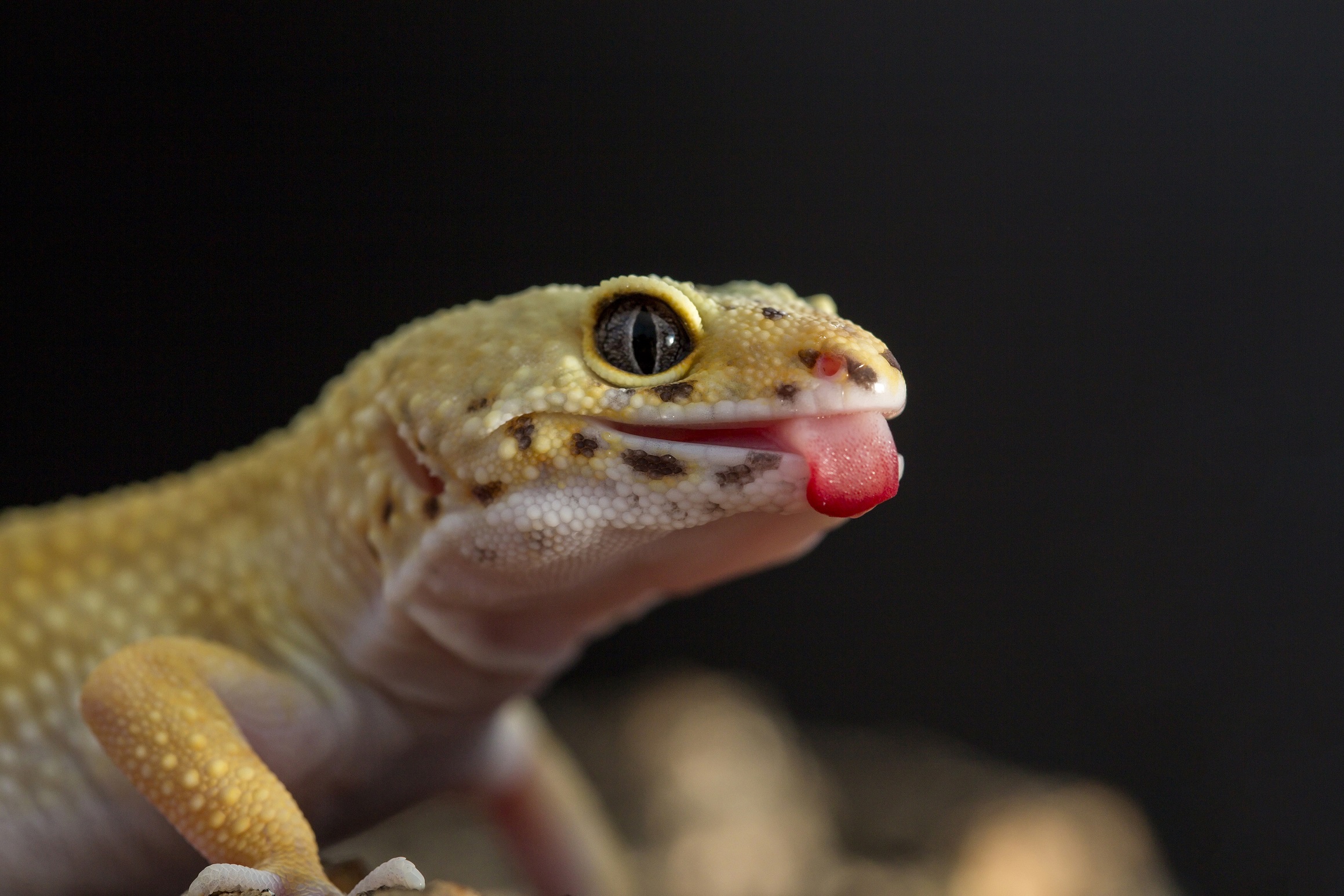Love at First Leopard
John Mack //August 1, 2016//
While it’s always wise to cater to your repeat customers, one of the best ways to ‘convert’ a potential reptile owner to a lifelong reptile lover is through an animal best fitted to a reptile newbie. One of the best reptiles for just this function—and one of the bestselling reptiles across the board—is the leopard gecko. Since their inclusion in captive breeding programs, leopard geckos have skyrocketed to become one of the fastest selling reptiles in recent memory. Keeping these guys in stock should absolutely be a priority for any reptile retailer looking to expand their customer base.
While wild leopard geckos may tend towards drab patterns and colorations, captive-bred leopard geckos have been bred to have a marvelous array of morphs and colors, making them particularly attractive as pets.
Among these morphs are the Mack Snow and Mack Super Snow, which we first bred over 15 years ago. The Mack Super Snow, when reaching adulthood, features a solid white body with purple to black demarcations and black eyes with no visible pupils. These morphs have been interbred with those of other breeders, leading to such varied geckos as the Mack Snow Enigma, the Super Snow Blizzards and the Mack Snow Patternless.
There are numerous reasons why leopard geckos make ideal beginner reptile pets, starting with their
ease of care and ease of entry. Leopard geckos typically do not take much room—a 10- or 15-gallon terrarium can easily support a leopard gecko for much of its life—making this reptile ideal for small bedrooms, dorm rooms or small apartments. Further, while leopard geckos do require an under-tank heating element, they do not require a heat lamp or an ultraviolet light.
Leopard geckos are typically docile animals and, while they do not typically enjoy being handled, gentle handling is rarely stressful to them. One thing to note is that leopard geckos are nocturnal and are much more active at night. While this might seem to be a negative to some, this means that evenings can become prime gecko-watching or feeding time. Further, this provides unique opportunities in cage decoration and lighting. Many companies have begun offering LED lights to decorate leopard gecko cages, making for unique, interesting enclosures. ExoTerra, for instance, sells an LED light bar that automatically switches along a day/night cycle. Be aware, however, that lights that are too bright can cause a gecko stress or even pain, so inform your customers appropriately about their lighting choices.
Leopard geckos should be particularly appealing to retailers for one simple reason: their feeding habits. Like most lizards, leopard geckos have voracious appetites. While many debate the pros and cons of feeding geckos mealworms or crickets, both have their advantages for gecko nutrition and both can become more than adequate staples for a new leopard gecko pet. As a retailer, definitely consider stocking both crickets and mealworms, such that your customers can decide which is best for themselves. Leopard geckos can feed on waxworms and even pinkie-sized mice, though these should be considered as occasional treats, rather than a staple food.
We’ve noted this a number of times in past articles, but it bears repeating: providing a quality, knowledgeable customer-service experience and ensuring that you have necessary food items in stock on a regular basis ensures that a one-time customer becomes a repeat customer. That repeat customer may spend hundreds, if not thousands, of dollars in your store after that initial animal sale.
Leopard geckos provide a great entry for both newbie reptile owners and for retailers seeking to break into the reptile sales arena. Start preparing your store and dive right in!



















